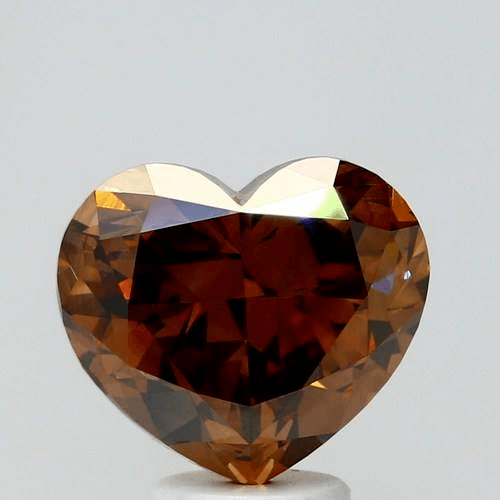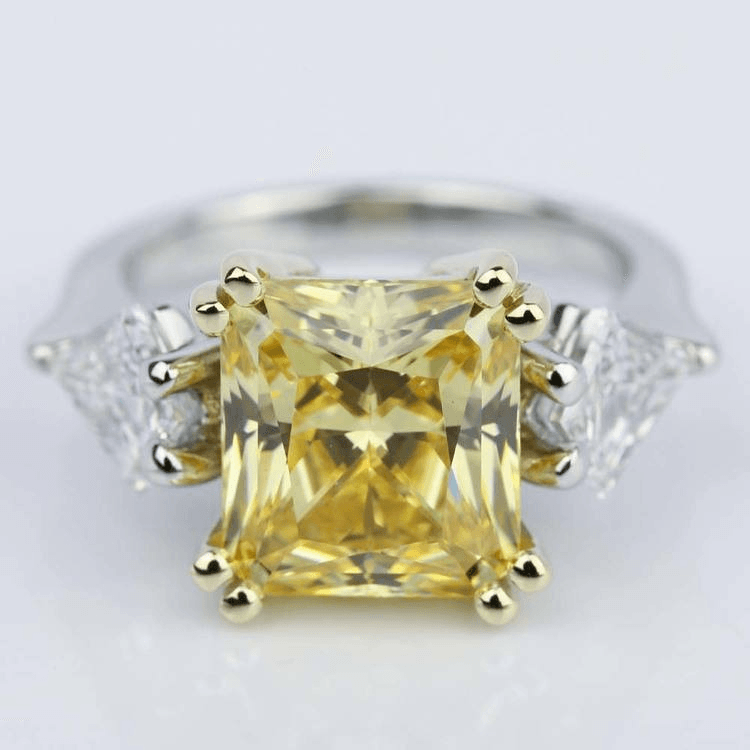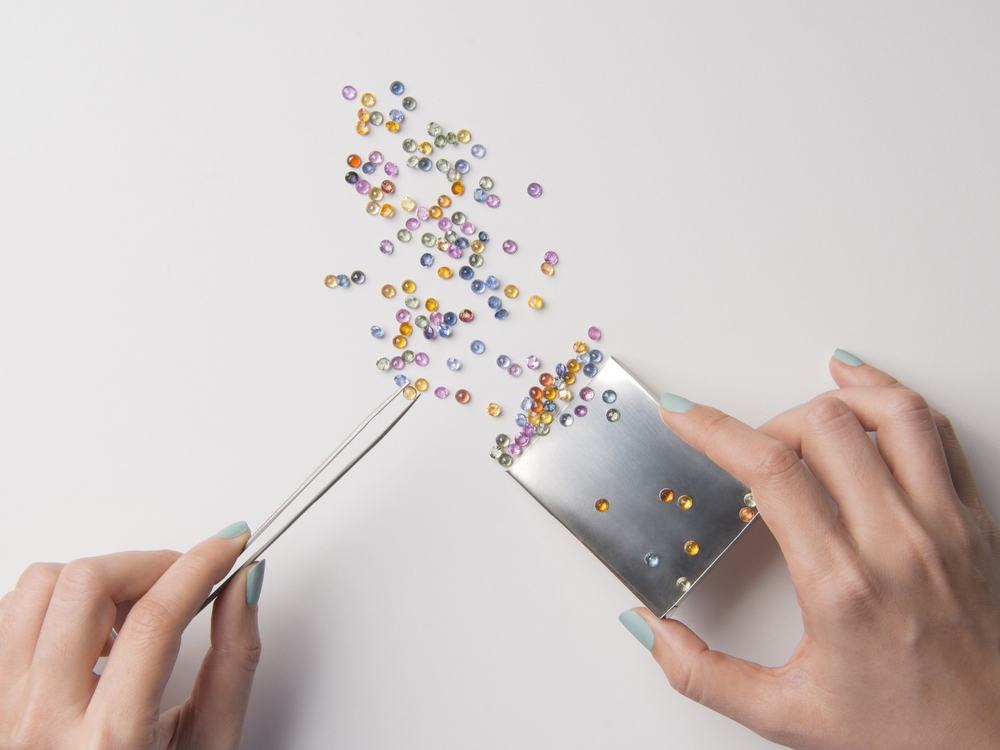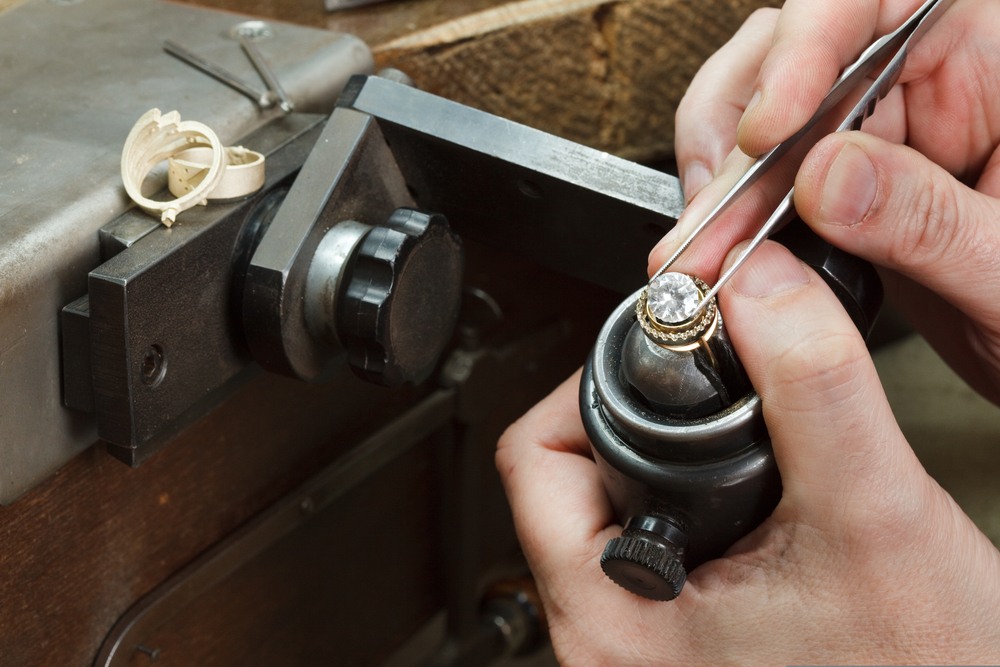Clear, sparkling diamonds are often the standard for fine jewelry, especially engagement rings and diamond stud earrings. However, almost all diamonds have a little color to them. For “white” diamonds, this means a slight yellow or brown tinge in an otherwise colorless stone. These are graded on a scale of D to Z, with D being an exceedingly rare colorless diamond, and Z being a low-quality diamond.
However, if a diamond’s color is so intense that it goes beyond the Z grade, it’s value grows exponentially. Referred to as “fancy” diamonds, these colored diamonds are found in myriad shades of blue, red, brown, pink, purple and canary yellow.

1.00 Carat Radiant Loose Diamond, Fancy Purplish Pink
Among these, red and pink diamonds are the most sought-after for how rarely they occur in nature. In fact, 90% of pink diamonds have been found in only one mine: the Argyle Diamond Mine in Western Australia. This mine is set to close in 2019, and when it does, it is unknown when and where another source of these precious diamonds will be found, making any pink diamond currently on the market all the more valuable.
So exactly how valuable are fancy diamonds? Their prices may often reach higher than even the most flawless colorless diamonds. For this reason, fancy diamonds are sought after by celebrities and the affluent, and many of the largest and most vibrant stones rest in private collections. The Smithsonian is home to one of the most well known (and valuable!) blue diamonds in the world—The Hope Diamond. Sometimes, though, these rare and vibrant stones make an appearance in luxury auction houses. In May, Sotheby’s auctioned off the 300-year-old 6.16 carat Farnese blue diamond for $6.7 million—about $1 million per carat!

5.14 Carat Fancy Dark Orange Brown Loose Diamond
Grading a Fancy: Color Counts!
Like their colorless counterparts, fancy diamonds are graded by the GIA in terms of color. Unlike colorless diamonds, though, the color rating scale differs for diamonds with deep hues. Fancy diamonds are given a grade based on the intensity of their color. You’ll find:
- Fancy Light
- Fancy
- Fancy Intense
- Fancy Vivid
As the color saturation increases, so does the value. The color grade will also often include a more detailed description of the diamond’s particular hue, such as “fancy yellowish orange,” “fancy light blue-green,” or “fancy pink brown.”

.99 Carat Marquise Loose Diamond, Light Green Yellow
Not all colorful and saturated fancy diamonds are extraordinarily expensive, however. Brown diamonds—sometimes called champagne diamonds—are becoming more popular and they are moderately priced. Fancy yellow diamonds are also one of the more common and less expensive fancy hues, and celebrities like Rebecca Romijn rock yellow engagement rings in lieu of clear center diamonds. Lighter and more muted stones will also be less expensive than bolder hues in the same color family.
What about the Other C’s?
Color saturation is one of the most important areas that affect a fancy hue’s price, but carat, clarity and cut also affect a stone’s quality and demand. With fancy diamonds, though, the importance of the cut and clarity grades rests on how these areas affect the stone’s overall color and durability. The GIA states that “inclusions that threaten the gem’s durability can lower a fancy color diamond’s value significantly.”
The cut of a fancy colored diamond should also help enhance it’s color; the right cut or shape of a diamond may even make a diamond appear darker. The GIA states that radiant shapes flatter yellow diamonds that are a bit muted in color as the shape brings out the richness of the hue.

Fancy Yellow Radiant Engagement Ring with Kite Shaped Diamonds
Carat weights also affect the value and price of a fancy diamond. Large fancy diamonds are rarer than smaller stones. Large stones may also look darker or richer in hue, so, of course, the most valuable fancy stones will have larger carat weights in rich hues.
Because of their rarity and bold beauty, fancy diamonds typically command a higher price tag. Color is the dominant feature of fancies, and the hue drives the price. In terms of demand, blue and red fancies are the rarest and most valuable stones. However, saturated deep pinks are also rare and quite valuable. For buyers who want a rarer hue but do not have a bottomless budget, muted hues like light pinks or purples and plentiful hues like yellows and browns may be an option. Remember, though, colorful diamonds are not the norm. Any diamond that veers from the traditional colorless spectrum will command a higher price tag for its rarity and vivid Brilliance.



